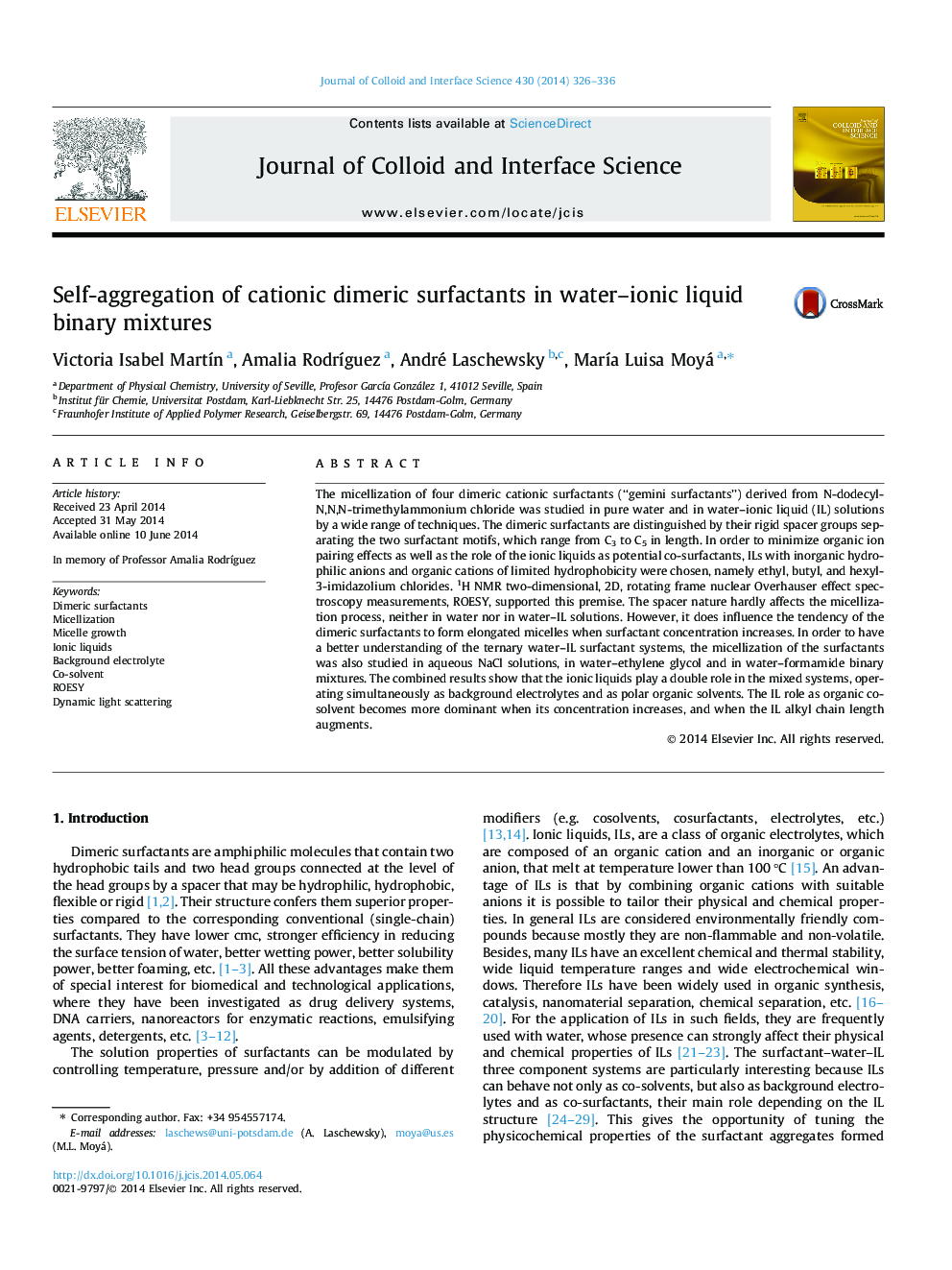| کد مقاله | کد نشریه | سال انتشار | مقاله انگلیسی | نسخه تمام متن |
|---|---|---|---|---|
| 607174 | 1454565 | 2014 | 11 صفحه PDF | دانلود رایگان |
• Aqueous solutions of four dimeric surfactants were characterized at 303 K.
• Micellar growth is favored by a decrease in the minimum surface area per head group.
• Addition of ionic liquids influences the self-organization process.
• Ionic liquids behave simultaneously as background electrolytes and as co-solvents.
The micellization of four dimeric cationic surfactants (“gemini surfactants”) derived from N-dodecyl-N,N,N-trimethylammonium chloride was studied in pure water and in water–ionic liquid (IL) solutions by a wide range of techniques. The dimeric surfactants are distinguished by their rigid spacer groups separating the two surfactant motifs, which range from C3 to C5 in length. In order to minimize organic ion pairing effects as well as the role of the ionic liquids as potential co-surfactants, ILs with inorganic hydrophilic anions and organic cations of limited hydrophobicity were chosen, namely ethyl, butyl, and hexyl-3-imidazolium chlorides. 1H NMR two-dimensional, 2D, rotating frame nuclear Overhauser effect spectroscopy measurements, ROESY, supported this premise. The spacer nature hardly affects the micellization process, neither in water nor in water–IL solutions. However, it does influence the tendency of the dimeric surfactants to form elongated micelles when surfactant concentration increases. In order to have a better understanding of the ternary water–IL surfactant systems, the micellization of the surfactants was also studied in aqueous NaCl solutions, in water–ethylene glycol and in water–formamide binary mixtures. The combined results show that the ionic liquids play a double role in the mixed systems, operating simultaneously as background electrolytes and as polar organic solvents. The IL role as organic co-solvent becomes more dominant when its concentration increases, and when the IL alkyl chain length augments.
Figure optionsDownload high-quality image (54 K)Download as PowerPoint slide
Journal: Journal of Colloid and Interface Science - Volume 430, 15 September 2014, Pages 326–336
